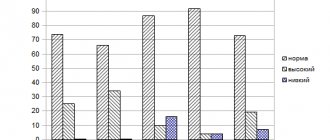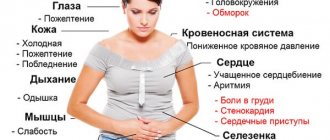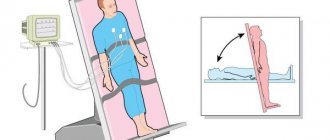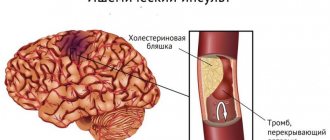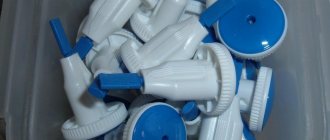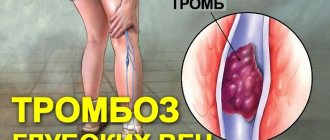Arterial hypertension (hypertension) is a disease, the main and main symptom of which is a persistent increase in blood pressure (over 140/90 mm Hg).
Depending on the degree of excess of normal blood pressure, hypertension can have 1st, 2nd and 3rd degrees.
The main danger of hypertension is that this disease tends to progress. The last, third stage of hypertension poses an immediate threat to life, since at any time it can lead to complications such as heart attack, stroke, hypertensive crisis.
Meanwhile, antihypertensive drugs prescribed for hypertension only help to temporarily reduce blood pressure, only at its current values, and do not in any way prevent the progression of the disease. As a result, the dosage of drugs has to be increased, and the disease continues to worsen until it leads to a fatal complication.
Cause of hypertension
The main cause of hypertension and other cardiovascular diseases is atherosclerosis - that is, clogging of blood vessels with cholesterol deposits (plaques), narrowing of the lumen of blood vessels, impaired tone of the vascular wall and deterioration of blood circulation. Atherosclerotic plaques are deposits of excess cholesterol found in the blood. This excess cholesterol can be endogenous (produced by the body itself) or exogenous (comes from outside the body). In the first case, it is caused by excessive liver activity, in the second – by metabolic disorders.
Finally, the third main cause of high blood pressure may be kidney dysfunction.
What happens if hypertension is not treated?
Delayed diagnosis and inadequate therapy in most cases leads to serious diseases that are dangerous to our health:
- cerebrovascular dysfunction;
- myocardial infarction;
- hemorrhagic stroke;
- preeclampsia;
- hypertensive crisis;
- cerebral or myocardial ischemia;
- erectile disfunction;
- acute hypertensive encephalopathy;
- impotence;
- angina pectoris;
- pulmonary edema;
- disruption of the nervous system;
- retinal detachment;
- uremia;
- atherosclerosis;
- metabolic syndrome;
- heart failure.
Additional Information.
As arterial hypertension progresses, chronic ischemia occurs, resulting in sclerotic changes in the kidneys. The main organ of the excretory system ceases to cope with its physiological functions, and renal failure develops.
How is hypertension treated?
The Paramita Clinic has unique methods for treating hypertension, which allow you to break this chain and get rid of hypertension.
In the treatment of hypertension, we proceed from the fact that high blood pressure, or hypertension, is not so much an independent disease as a symptom. It is futile to fight it without finding out the cause of the disease. Only by establishing the root cause of high blood pressure can it be eliminated and thereby cure hypertension.
After conducting a comprehensive diagnosis using oriental medicine and modern diagnostic methods and comparing the data, we will determine the true root cause of hypertension in your particular case.
If it is necessary to clarify the diagnosis and determine the optimal treatment program, additional studies may be prescribed:
- general blood analysis,
- general urinalysis (to assess the kidney disease factor),
- cholesterol analysis - the so-called lipid profile, or blood fat map, to assess the development of atherosclerosis.
Having found out the cause of the disease, we will develop an individual treatment plan with which we will eliminate this cause and thereby bring blood pressure back to normal. The Paramita clinic uses just such a combination of acupuncture procedures, acupressure and moxotherapy, which provides the maximum therapeutic effect. The correct combination of procedures with herbal medicine is also important.
The Tibetan herbal medicines we use to treat hypertension not only improve blood circulation and help cleanse blood vessels, but also improve the condition of the nervous system, restore emotional stability, and increase stress resistance.
Along with herbal medicines, hirudotherapy can be used in the treatment of hypertension. The use of this method is based on the ability of leech saliva secretion to improve blood fluidity and reduce its viscosity. Thanks to this, hirudotherapy prevents thrombus formation, and thereby significantly reduces the risk of vascular blockage due to hypertension and complications such as heart attack and stroke.
Myths and truth: arterial hypertension
May 25, 2021
Arterial hypertension is one of the most common diseases in the modern world. And therefore, it is not surprising that many rumors arise around this disease. Is it necessary to treat high blood pressure and is it possible to normalize it once and for all? Is it enough to take pills or will you have to change your lifestyle?
Hypertension is an insidious disease. It doesn’t seem to hurt anything, but it can shorten your life by 10-20 years. Headache, increased irritability and nausea bother most hypertensive patients only in the initial stages of the disease. Further, poor health occurs only during hypertensive crises. And since nothing hurts, they don’t pay attention to hypertension. Only 40% of hypertensive patients know about their disease. Of these, 40% take medications. 40% of those who take medications take them correctly and in the right doses, and every year there are more and more hypertensive patients.
As with any highly common disease, many myths have arisen about arterial hypertension.
Myth 1.
Arterial hypertension can be cured
Hypertension is a chronic disease that cannot be completely cured. Therefore, it is impossible to forget about regularly visiting a doctor and taking medications, since arterial hypertension can lead to the risk of stroke, heart attack and kidney damage. This disease is also a common cause of death in the world.
Myth 2.
If your blood pressure is normal, you do not need to take medicine
Treatment of arterial hypertension involves lifelong regular use of drugs that are selected individually and work in combination. Temporary improvement without medication will quickly disappear. In addition, it is precisely skipping antihypertensive medications that leads to the risk of a hypertensive crisis.
Myth 3.
Arterial hypertension will be indicated by symptoms
The insidiousness of high blood pressure lies precisely in maintaining good health for a long time. There are signs such as sudden deterioration of vision, decreased sensitivity in the extremities, constant shortness of breath, but these are not symptoms of hypertension, but signal the development of complications.
Myth 4.
If the blood pressure medication does not help immediately, you need to change it
It is necessary to take into account the individual characteristics of the body, because the reaction to the same drug in different people can be completely different. Therefore, drugs and dosage are usually selected 2-3 times. The patient is prescribed a drug, he takes it and at the same time keeps a diary of “pressure, pulse, well-being.” After 2 weeks, a second consultation is usually scheduled to adjust the dose, if necessary, or add drugs from another group.
Myth 5
. If your blood pressure is constantly elevated, you can say goodbye to a normal life. Therefore, it is better not to know about him any longer
If you follow your doctor's recommendations, it is not difficult to avoid complications, lead an active lifestyle and feel good even with high blood pressure. If you give up on the disease, hypertension can lead to severe, sometimes fatal complications. In addition, increased pressure may indicate very serious diseases of the nervous and endocrine systems or indicate improper functioning of the kidneys.
Tags:
- Hypertension
- Arterial pressure
To leave a comment you must be an authorized user
An excursion into the anatomy and physiology of the cardiovascular system
The heart is the main pump that pumps blood into the vessels. She runs through the vessels to every organ of our body to water and feed it. Every living thing must drink and eat, on time and in sufficient quantity . Otherwise it dies.
There are four chambers inside the heart: two atria and two ventricles. They are separated from each other by partitions and valves.
The heart either contracts, and this is called systole, or relaxes, and this is called diastole.
During systole, the volume of the chambers decreases and blood is released into the vessels.
Systolic pressure is the pressure that blood exerts on the walls of blood vessels during heart contraction.
During diastole, the chambers expand again and fill with blood.
Diastolic pressure is the pressure that blood exerts on the walls of blood vessels when the heart relaxes.
The heart valves open when necessary, and close when necessary, so that blood flows only in the right direction.
Arteries are vessels through which blood flows from the heart. Their walls have a well-developed muscle layer, thanks to which the arteries contract and relax, forcing the blood to move.
There are also elastic fibers in the walls of the arteries, so they can stretch when pressure increases and then return to their original state.
The tone of the walls of blood vessels, their ability to stretch and contract depending on small pressure surges, which are completely natural during the day, depend on muscle and elastic fibers.
Veins are vessels through which blood flows to the heart after it has “fed” the body and taken with it “dirty dishes,” that is, cell waste products.
The blood pressure in them is much lower. Apparently, the “dishes” are dragging.
Capillaries are the smallest vessels that can penetrate into every cell. The speed of blood flow there is minimal.
Doctor Shishonin's opinion
Doctors often have to answer the question of whether hypertension can be cured. Dr. Shishonin, through theoretical and experimental research, proved that hypertension is not a disease, but only a syndrome of another disease called compression of the vertebral arteries.
When vertebrogenic compression of the vertebral veins, arteries and nerves is eliminated, and blood flow in the rhomboid fossa of the brain stem is restored, the main symptom of the disease - high blood pressure - will go away on its own and does not need to be treated. Shishonin also focuses on the fact that in 95% of cases this is what happens.
In approximately 5% of cases, hypertension is associated with pathologies of the endocrine glands (malignant and benign neoplasms in the kidneys, thyroid or adrenal glands).
Join the Club of Former Hypertensive Patients
, download gymnastics, which has already helped hundreds of thousands of people overcome pressure surges and hypertension. Get the most current and correct information about problems related to blood pressure, osteochondrosis, atherosclerosis, ask your questions to Dr. Shishonin and just communicate.
People often come to a therapist with complaints of feeling unwell, dizziness, discomfort in the neck, chest, headaches, and so on. When measuring blood pressure, it is determined that the patient has 150/100 mm. Hg Art. The specialist makes a preliminary diagnosis of “hypertension of the second stage.” Next, the doctor refers the patient for additional examination of various organs and systems (general and biochemical analysis of blood and urine, MRI, CT, ultrasound of the kidneys, adrenal glands, thyroid, parathyroid glands).
After the tests and examinations, it turns out that hypertension is not associated with pathology of the endocrine system. Next, the therapist makes a diagnosis of “essential hypertension,” that is, a disease that, according to some doctors, has an unexplained etiology.
Note.
Essential hypertension is not an independent disease, but a pathology that is associated with deep cervical osteochondrosis, vertebral instability and herniated intervertebral discs.
After restoration of microcirculation in the cervical spine, signs of high blood pressure will no longer torment patients. With the right approach, people at any age can normalize their blood pressure, without the use of pills.
Non-drug treatments
Non-drug therapy for hypertension is a series of measures aimed at eliminating the unfavorable factors that cause the progression of the disease, as well as preventing possible complications of arterial hypertension.
Sign up for a checkup for hypertension
Make an appointment
Who is to blame for high blood pressure?
1. “Nerves.” We freaked out, the adrenal glands released adrenaline, the heart began to work harder, the blood vessels spasmed (narrowed), and the pressure increased.
In general, this mechanism was not invented by the Creator by chance. Imagine a situation when you are walking calmly down the street and suddenly you see a huge dog rushing straight towards you. What are you going to do? Stand as before? NO! You will either take something in your hands for protection, or you will “make your legs”, that is, give it a go.
To do this, you need to tense your muscles so that they are prepared to fight or flee, supply them with oxygen, and therefore speed up the heart. Otherwise you'll be screwed.
And now the situation is different. This is a difficult buyer for you. He exhausted your soul, demanding that you let go of “something from the pressure.”
You steadfastly resist the onslaught, explaining that these drugs are prescribed only by a doctor.
But he doesn’t calm down, he starts accusing you of unprofessionalism and so on and so forth. A wave of indignation, irritation, and maybe even a desire to crack him properly rises inside you.
Can you hit him? No.
How about yelling back? You can, of course, but it will cost you more. There will be complaints, calls to the authorities, this and that... So again, no.
And if this situation occurs day after day, then hypertension can become your companion for the rest of your life.
2. Increased levels of “bad” cholesterol (low-density lipoproteins) in the blood.
With age, the elasticity of blood vessels decreases. High blood pressure, which becomes a frequent visitor, begins to damage the walls of blood vessels. While the inner lining of the vessels is smooth, nothing sticks to it.
But as soon as damage appears in it, the same low-density lipoproteins that eventually form cholesterol plaques begin to stick to them.
They further narrow the blood vessels and further reduce their elasticity.
3. Love of salty foods. Salt attracts water, increasing the volume of circulating blood, and therefore pressure.
4. Overweight. Body weight increases, but the length of blood vessels and the size of the heart remain the same. Under these conditions, they have to work harder to “feed” and “drink” the extra 10-20 kg. At first they cope with this, but in the end, they throw out the white flag and begin to work through the stump deck.
5. Smoking. The harmful substances contained in tobacco smoke constrict blood vessels, increasing blood pressure, plus they damage their walls, and “bad” cholesterol begins to stick to them.
6. Alcohol. It is a mistake to think that it dilates blood vessels. Vasodilation is replaced by persistent spasm, and the pressure jumps again.
7. Physical inactivity. It reduces the elasticity of the vascular wall. When we move, the pressure in the vessels constantly changes, and the vascular wall either contracts or relaxes, in general, it trains. This does not happen with a sedentary lifestyle.
8. Well, and heredity. Where would we be without her?
What does blood pressure depend on?
Firstly, on the volume of circulating blood. If the blood volume of an adult is approximately 5 liters, then 2/3 of it is in the vessels.
When the volume of blood in the vessels increases, the pressure increases; when the volume decreases, the pressure decreases.
And in what cases does it (i.e., the volume of circulating blood) increase? For example, in case of kidney diseases, when they cannot cope with the task of removing everything unnecessary.
What should you do in this case?
First of all, improve kidney function.
In the meantime, the court and business, drive the “excess” liquid from the vessels.
The action of diuretics is based on this. They expelled excess fluid, reduced the volume of circulating blood in the vessels, and lowered the pressure.
Secondly, blood pressure depends on the diameter of the vessels through which blood flows. The smaller the diameter, the more the vessel walls resist blood flow, the higher the pressure.
Probably everyone was holding a hose in their hands. Remember how the pressure from it increases if you squeeze it with your fingers? It's the same principle here.
The diameter of blood vessels can decrease in three cases:
- Spasm, i.e. contraction of muscle fibers of the vascular wall.
- A cholesterol plaque in the lumen of a vessel, a thrombus, or all together.
- External factors that put pressure on the vessel from the outside. For example, spasming muscles.
Thirdly, pressure depends on the work of the heart. The more intense the pump works, the more blood it pumps per unit of time, the higher the pressure.
This means that if you force it to contract with less force, then the pressure will decrease.
Is everything clear yet?
Go ahead.
How does the body maintain normal blood pressure levels?
There are two mechanisms for this:
Nervous and humoral.
Nervous regulation is carried out from the brain center. Or rather, from the centers. Such centers are found in the brain (vasomotor and autonomic centers) and in the spinal cord (sympathetic centers). As needed, nerve impulses go from here to the vessels and give them commands: “you need to contract (i.e., narrow the diameter)” or “you can relax.”
Humoral regulation is possible thanks to a large number of hormones (adrenaline, norepinephrine, angiotensin, steroid hormones, etc.), which monitor the work of the heart, vascular tone, and the volume of circulating blood.
In particular, the renin-angiotensin system, which you know, in which the kidneys take part, is part of humoral regulation.
Folk remedies for hypertension, the most effective
Hypertension can be treated not only with medications, but also with traditional medicine; they have both a therapeutic and preventive effect. Let's consider the most effective traditional methods of treating hypertension.
Tea
Herbal infusions cope well with high blood pressure; individually, herbs will not have the desired effect, but in combination, there will be a wonderful effect:
- mint + fennel + valerian root + chamomile;
- valerian root + oregano + St. John's wort herb;
- calendula flowers + linden flowers + peppermint;
- hawthorn flowers + hawthorn fruits + elderberry flowers;
- dill seeds + motherwort grass + chamomile.
All components for each option must be mixed in equal quantities. To prepare tea, place 2 tablespoons of a mixture of herbs in a thermos and pour 0.5 liters of boiling water and leave overnight.
If at the same time a person takes medications to lower blood pressure, then the daily dose is 250 milliliters, of which 125 ml should be drunk in the morning on an empty stomach, the next 125 ml an hour before bedtime. If you do not take additional funds, then you should drink 250 ml of tea according to the same scheme. The course is individual, 2-4 weeks.
- The best recipes for treating arthritis with folk remedies at home
Honey
You need to prepare the following composition:
- 500 milliliters of honey;
- 3 kilograms of onions;
- 25 pieces of walnut partitions;
- 500 milliliters of vodka.
Grind the partitions from the nuts in a mortar or using a blender, peel the onion, wash it, pass it through a meat grinder or grate it and squeeze the juice out of the mixture (this is what you will need). Onion juice with partition powder, combine with honey and pour in vodka, mix well until smooth.
Leave for 10 days, under a closed lid in a dark place, shaking once every 2 days. Take 1 tablespoon no more than three times a day, after meals. The prepared mixture is enough for one course of treatment, with normal tolerance.
Garlic
Several remedies can be prepared from garlic to lower blood pressure; each option must be used with caution, because the wrong dose or individual intolerance to garlic can, on the contrary, increase blood pressure or cause allergic reactions.
Recipe No. 1
Grind 1-2 medium garlic cloves to a puree and combine with a glass of kefir, shake well and drink the resulting mixture in one gulp. Use the method no more than 2 times a week.
Recipe No. 2
- Osteoarthritis of the hip joint: treatment at home with folk remedies
Place 25 cloves of garlic in half a liter of vodka and leave for 14 days in a dark, cool place without shaking. Take 5 ml half an hour before breakfast, lunch, dinner. Course 14-28 days.
Recipe No. 3
Pour 1 large peeled head of garlic into 500 milliliters of boiling water, leave for 7 days, use the product as a lotion on the forehead, feet, palms at the time when blood pressure surges begin.
Recipe No. 4
Boil a small, peeled head of garlic in a glass of milk until softened, strain. Take a tablespoon 3 times a day after meals – 2 weeks. Prepare fresh decoction every 2 days.
Recipe No. 5
Finely chop 1 large onion, mix with 4 cloves of grated garlic, and one spoon of crushed rowan fruits, pour the resulting mixture into 1 liter of boiled, cooled water, and after boiling, simmer for another 15 minutes. Then add a tablespoon of chopped dill and parsley, boil for another 10 minutes, leave for 1-1.5 hours, strain. Take 2 tablespoons 4 times a day, half an hour before meals. The course is 10 days, after which you need to take a three-week break, then the course can be repeated again.
Compresses and baths
Recipe No. 1
Combine apple cider vinegar with water 1:1, dip 2 pieces of fabric or towels into the solution and wrap them around your feet for 15-20 minutes. The method is used only in case of a sharp rise in pressure, or hypertension of 2-3 degrees.
- How to treat arthrosis of the shoulder joint at home with folk remedies
Recipe No. 2
Useful for high blood pressure, contrast baths. For 20 minutes, immerse your feet in either cold or hot water, finishing the procedure with cold water. An effective method, but with pressure above 160/110, it will be ineffective.
Recipe No. 3
Dissolve 50 grams of dry mustard powder in 5 liters of hot water and pour into a warm bath. Lie in such a bath for 10-15 minutes, then dress warmly and wrap yourself in a blanket, try to sleep.
Juices
Recipe No. 1
Squeeze juice from fresh, raw beets and take 30 ml, 3-4 times during the day. The course is 21 days, without a break.
Recipe No. 2
Freshly squeezed red grape juice should be drunk according to the following scheme:
- Days 1-3 – 2 tablespoons in the morning and before bed;
- 4-6 days – 50 ml, twice a day;
- Days 7-9 – 150 ml twice;
- 10-11 days 200 ml twice;
- Days 12-13 – 250 ml during the day.
Starting from the fourteenth day, drink grape juice in the reverse order, where the last dose will be 2 tablespoons.
Recipe No. 3
Boil pomegranate peel in 400 milliliters of water and drink 200 ml instead of tea several times a day.
Fruit
Recipe No. 1
Pour 2 tablespoons of dried currants into a glass of boiling water, simmer for 10 minutes over low heat, let sit for one hour, strain. Take 50-60 ml 4 times a day, regardless of meals.
Recipe No. 2
Add a tablespoon of dry rose hips to 500 milliliters of boiling water, boil for about 5 minutes, leave under a closed lid for half an hour, strain, add a spoonful of liquid honey to the warm broth, divide the resulting volume into 2 doses during the day.
Recipe No. 3
Grind 400 grams of fresh or thawed cranberries with a tablespoon of sugar and take after meals, a dessert spoon 3 times a day, or add jam to tea instead of sugar.
Recipe No. 4
Mix 2 tablespoons of hawthorn fruit with a pinch of dried mint, add the mixture to 0.5 liters of boiling water and simmer for 15 minutes, leave to infuse for 1.5 hours under a closed lid or in a thermos, strain, add sugar or honey as desired.
Drink 100 ml 2-3 times a day. Any decoction of the fruit can be drunk for a long time, 3-6 months, with normal tolerance and a visible positive effect. Then, you need to take a break for 1-1.5 months, and the course can be repeated.
Complications
Inattention to one’s own health with a tendency to increase blood pressure is a serious risk, since the heart, brain, kidneys, nervous system, and blood vessels become the “targets” of hypertension. A persistent increase in blood pressure can lead to irreversible changes:
Deterioration of blood supply to brain structures due to thickening and transformation of vascular walls leads to the appearance of:
Violation of the excretory function of the kidneys and dysfunction of the tubules due to changes in vascular structures causes the development of microalbuminuria (leakage of protein into the urine) and microhematuria (appearance of blood particles in the urine), frequent urination at night, as well as a number of other complications.
Hypertension has an extremely adverse effect on the human body, dramatically depleting its resources. The worst consequences of high blood pressure are heart attacks, strokes and deaths. Experts strongly recommend closely monitoring your condition and, if symptoms of a hypertensive attack appear, taking all possible measures in a timely manner to prevent the disease from developing and causing serious damage to your health.

